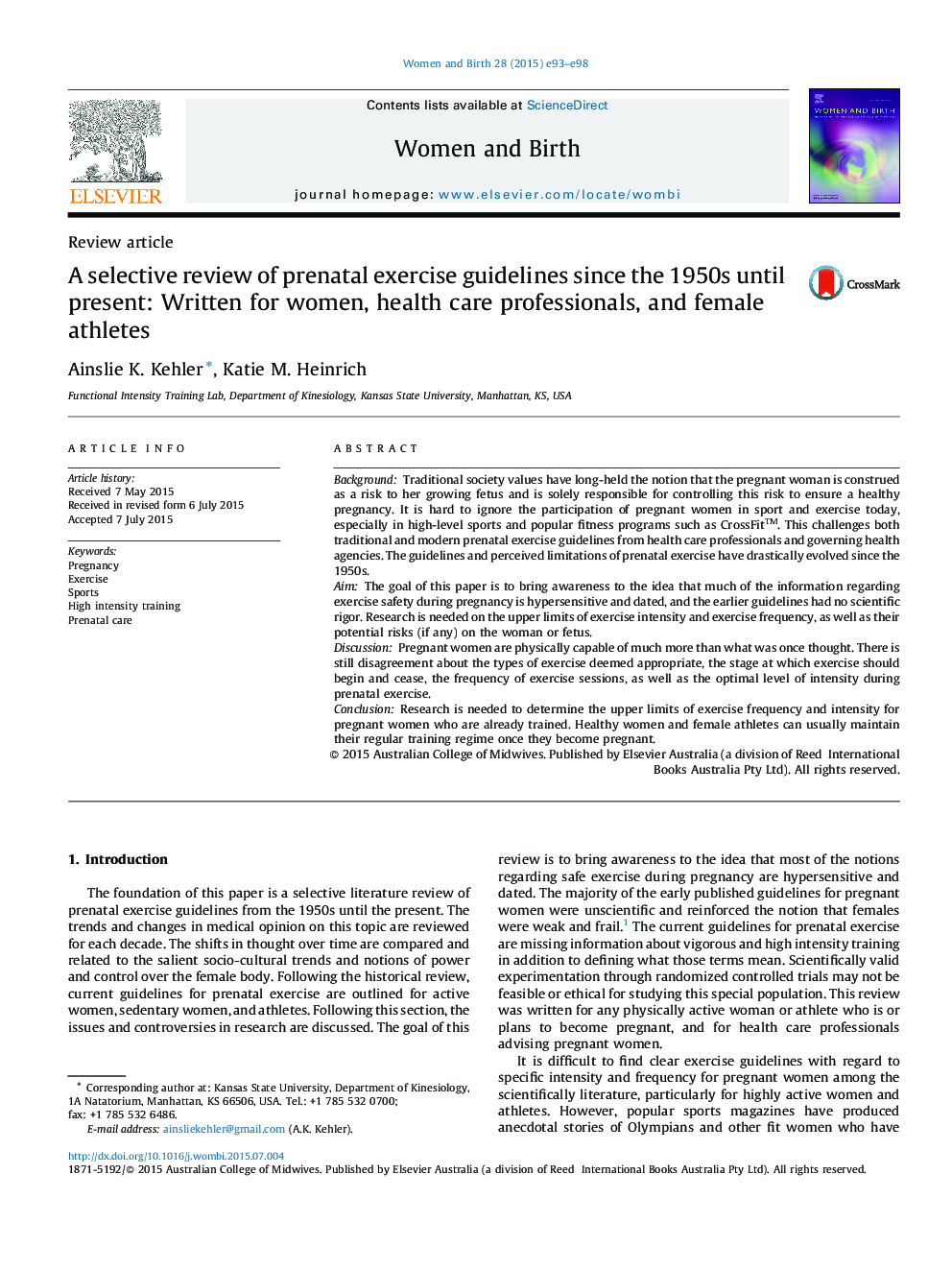| Article ID | Journal | Published Year | Pages | File Type |
|---|---|---|---|---|
| 2636497 | Women and Birth | 2015 | 6 Pages |
BackgroundTraditional society values have long-held the notion that the pregnant woman is construed as a risk to her growing fetus and is solely responsible for controlling this risk to ensure a healthy pregnancy. It is hard to ignore the participation of pregnant women in sport and exercise today, especially in high-level sports and popular fitness programs such as CrossFit™. This challenges both traditional and modern prenatal exercise guidelines from health care professionals and governing health agencies. The guidelines and perceived limitations of prenatal exercise have drastically evolved since the 1950s.AimThe goal of this paper is to bring awareness to the idea that much of the information regarding exercise safety during pregnancy is hypersensitive and dated, and the earlier guidelines had no scientific rigor. Research is needed on the upper limits of exercise intensity and exercise frequency, as well as their potential risks (if any) on the woman or fetus.DiscussionPregnant women are physically capable of much more than what was once thought. There is still disagreement about the types of exercise deemed appropriate, the stage at which exercise should begin and cease, the frequency of exercise sessions, as well as the optimal level of intensity during prenatal exercise.ConclusionResearch is needed to determine the upper limits of exercise frequency and intensity for pregnant women who are already trained. Healthy women and female athletes can usually maintain their regular training regime once they become pregnant.
